PH Meets: Twisted Automotive
PH gets exclusive access to the secret location that houses Twisted's 'new' Defender collection

Even if the iconic boxiness of Land Rover's Defender is not for you, the sight of 80 cars parked side-by-side in a dimly lit warehouse is something to behold. Each has been sat here patiently since it was delivered, only occasionally exposed from beneath its plastic covers to be started up and dusted off. Three years have passed since these cars rolled off the production line in Solihull, yet each looks as box-fresh as it did the moment those iconic D-E-F-E-N-D-E-R letters were first mounted on the nose.
"You won't be surprised to hear that we don't tell people about this location, all of these cars are just too special," says Twisted director Charles Fawcett, as he proudly shows PH around his company's hideout. "Every car here is on delivery mileage and has not moved since it arrived."
He doesn't just mean 'special' in the last-ever-Defender sense either; the specification of each is significant too. Thirty-six of the cars here, which will eventually be enhanced and put on sale as part of Twisted's upcoming Make History line-up, represent the very last example of their variant, each finished in an original colour. It's a special bunch, then - and remember, we're only faced with a portion of the original 240-car-strong fleet, which Twisted paid £7.5 million to buy.

"Some of those cars have been here since 2015, when they were the final cars of each variant to be made," says Charles. "All but three cars in the collection wear 16 plates, which is evidence of how late they were made," he continues, referring to the fact that 16 plates were only applied to cars registered from March 2016 onwards, two months after Defender production ended.
Charles, a born and bred Yorkshireman, lets us snoop around and lift the dust covers to take some precious snaps. He's quite happy to let us examine the new stuff while his attention turns to the uncovered vehicles parked against the wall. There are a dozen or so of them, each a Land Rover of some shape or form from yesteryear, but these ones aren't here to be sold. They're more personal.
"This Defender has a lot of meaning to me, because it's a former car of an early customer that really inspired Twisted," Charles explains as we stand next to a 53-plate 110 that's finished in a rough layer of army green paint and wearing a camo-coloured convertible rear end, with a snorkel intake and shovel mounted on the bonnet. "He sadly passed away recently, so it felt right to bring his car in. I don't know what we'll do with it, but it's a car that means a lot to Twisted."

Given that Twisted often deals with customers from finer walks of life, it's nice to hear that the firm's more humble beginnings are still valued to such a high extent. It has helped distinguish it, too; with so many Defender-modding companies focused on the "bling" aspect, Charles believes Twisted has held onto a more honest niche. "It is always a Defender with Twisted - we won't impersonate a higher spec car like the Range Rover. Some days you won't like it, it's a Defender! We'll always stay true to the car's origins."
The near eight-foot high Series IIA sat a few cars along is, you might think, not one to fit the bill, since its four wheels have been swapped for enormous tank tracks. But it is no less genuine than any other vehicle here, having originally been built for, and used by, an environmental company that needed something even more rugged than four-wheel drive. Charles wouldn't have it in here it if it were a glitzy six-wheeler developed as a vanity project; it has to be true to form.
Of course, Twisted endeavours to work a certain amount of its own magic on Maurice Wilks's original vision - that much has been clear since it shoehorned the first GM 6.2-litre V8 into a Series II and fitted Bilstein suspension. But, as Charles stressed on our drive in a 430hp 110 from his HQ to the Defender hideout, "our setup has no negative impact on off-road performance, only improvements to on-road handling". Twisted, he says, has no interest in changing the car's fundamental properties, such as its ride height, because that'll affect approach and departure angles etc. Instead, the company's engineers focus on improving the refinement and usability of what is a 70-year-old philosophy.

Upon returning to Twisted's Thirsk HQ, we meet James Ayre, who handles marketing. One thing immediately becomes clear as soon as we slip through the reception door into the workshop: the end of production has not hurt Twisted. Quite the opposite, actually. James tells us "demand has gone up so much that the workshop's gone from five to eight ramps".
There are several more Defenders on site waiting for their work, plus a whole line-up of used Landys that are being bought and sold under Twisted's sister brand, LR Motors. Three years since the last Defender was made there is certainly no shortage of work. Nor is there any shortage of enthusiasm from customers. Ayre explains that now no new cars will be added to the global stock, people are viewing their Defenders in a different light. They're no longer the workhorse, but the weekend toy. A utilitarian car to drive for fun.
"People spend more on their cars now than ever," says James, "because the cars are worth more. You only have to look at how the orders are now, the amount of work that goes into each car, the work hours required to complete each, to understand that this is far from just a simple upgrade."

Each Defender is stripped down and then built back up to specification by a single technician - James calls them that because they're specialists not just in one area but the whole Defender build - with the work including realignment of body panels, full cabin insulation and, in some models, complete powertrain replacements.
"In some ways, the classic build techniques of Land Rover have given us more work, because cars that left the production line rarely had straight panels," notes James, wryly. "It means we can always improve the finish, no matter how little work the customer wants done!"
Twisted customers come from all over the world, but there's consistency among their requests. Before production ended, cars would regularly be bought from Land Rover in £50k specification, and owners would request that Twisted applied around £50k of enhancements. But now, with some models going for double that value, the firm is receiving enhancement orders that bring the car's total value up to around £150k.
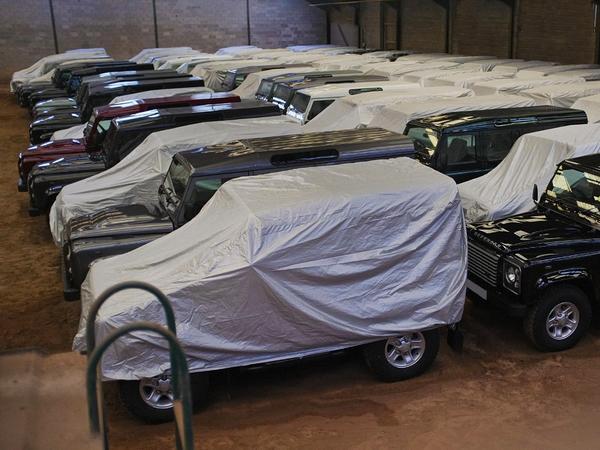
This change in spending is something that Charles believes will future-proof the company, even after his fleet of new Defenders sells out in three to four years time. "I expect work to get busier and busier - particularly when the new Defender is launched," he explains. "It'll be brilliant [the new car], no doubt, but the original Defender will remain the true Defender to us and our customers".
Although nearing capacity, Twisted has no intention of moving closer to a big city, with its boss preferring to remain in picturesque Thirsk. Charles believes a shift to London, for example, would harm the company's family feel, adding "customers can get here on the train from Kings Cross in only a couple of hours". Those who want a Twisted - even those who've flown from abroad - are clearly happy to travel for it.
"We're immensely proud of the global image we have," adds James. "People have even tried to imitate our brand logo on non-genuine cars. We've got messages from people saying they've seen Twisted stickers on Defenders all over the world. It's a nice, flattering problem for a small company like us to have." Indeed it is. One that confirms that passion for Defenders is far from fading - and emphasises just how influential this little company from Thirsk has swiftly become.


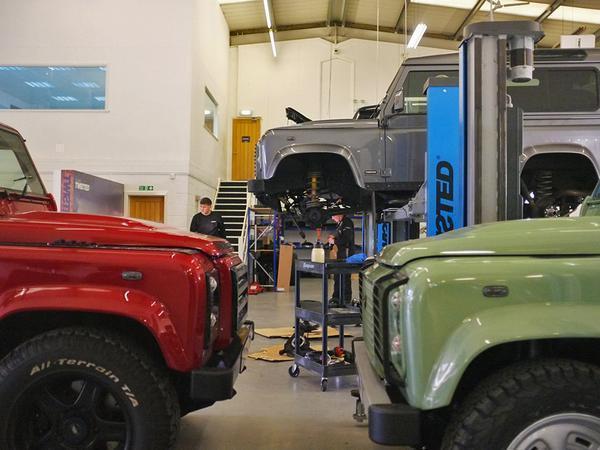


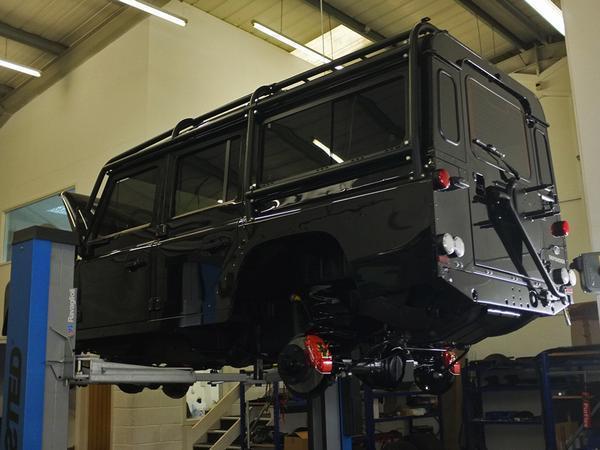
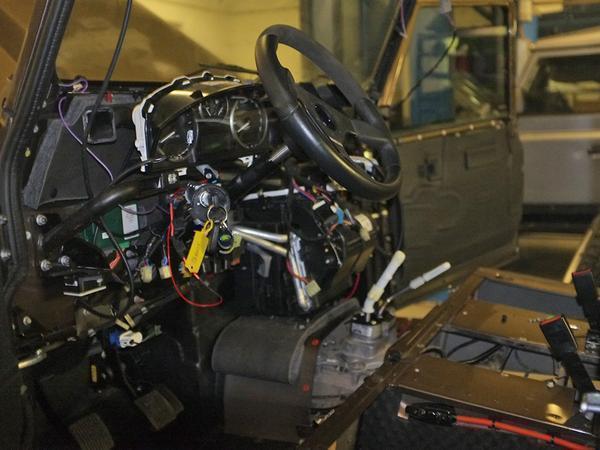

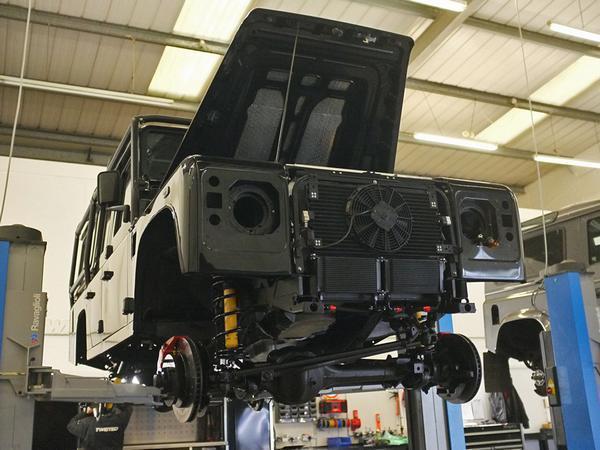
Gassing Station | General Gassing | Top of Page | What's New | My Stuff



